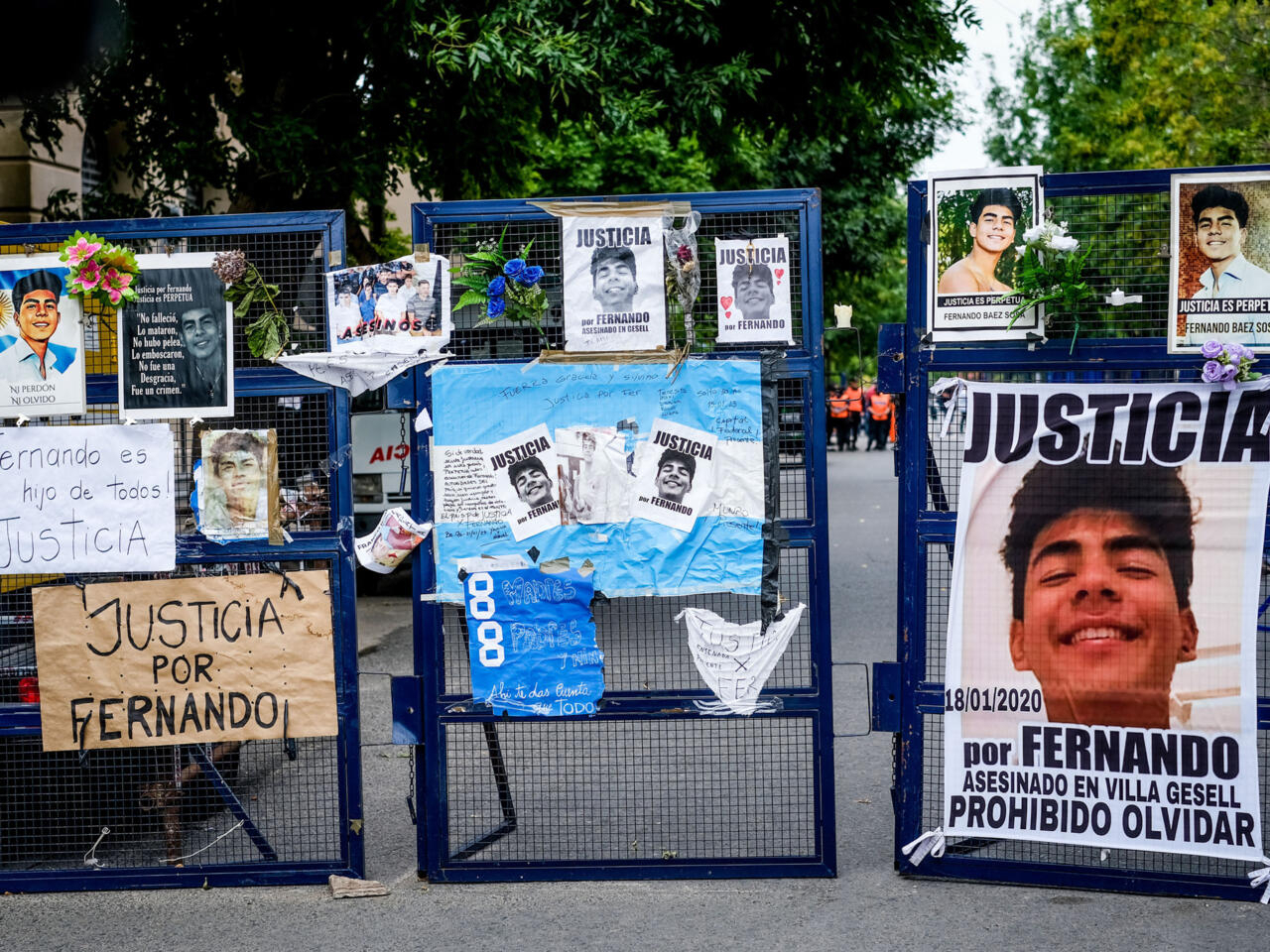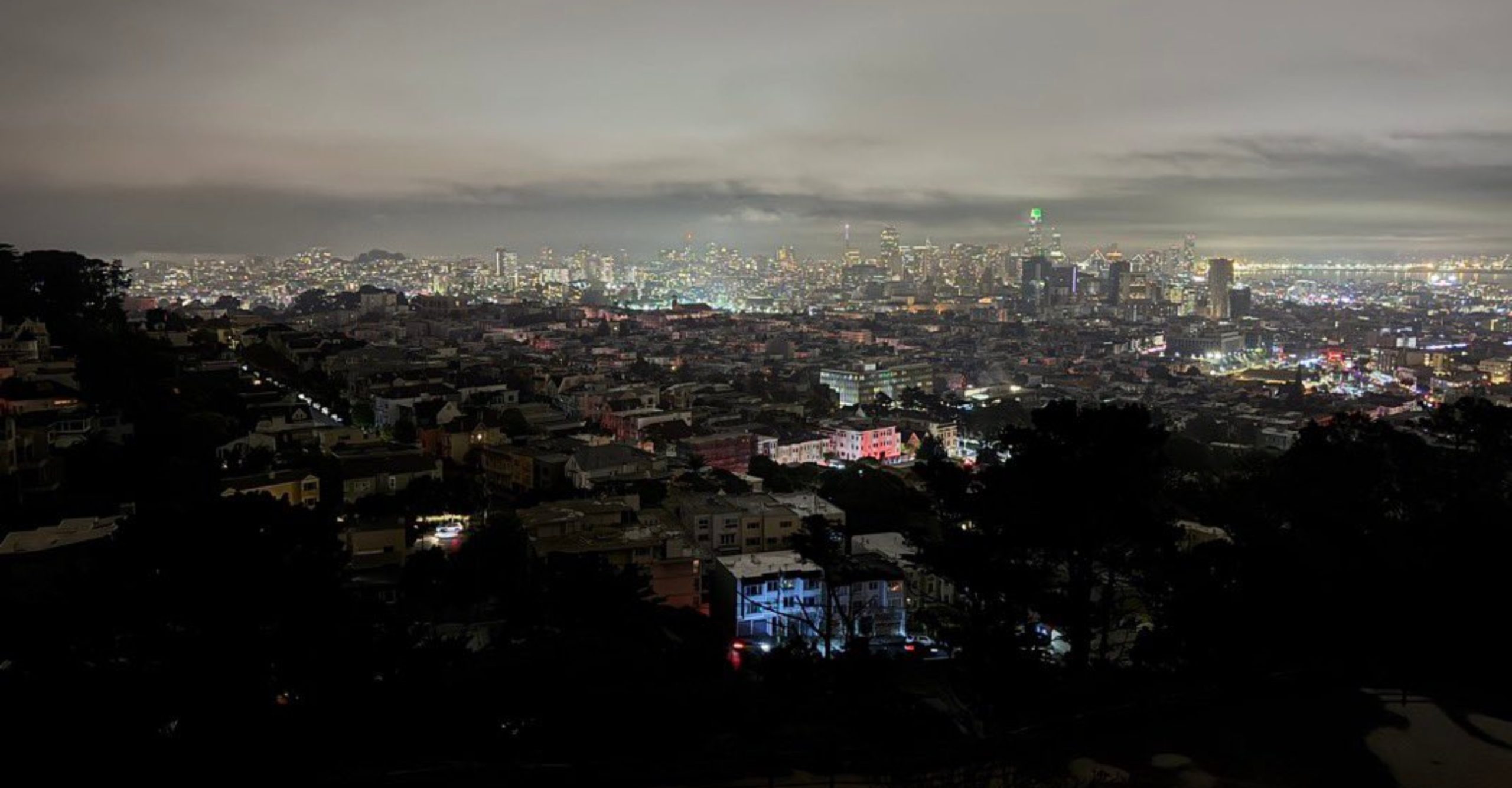International
High-profile murder trial shines light on Argentine discrimination

January 28 | By AFP | Philippe Bernes-Lasserre |
The shocking story of a teenager beaten to death by eight young rugby players has opened old wounds and shed light on class, race and gender discrimination in Argentine society.
Eight friends, now age 21 to 23, are facing life in prison if convicted of the premeditated murder of Fernando Baez three years ago in a popular seaside resort.
The trial is under way in Dolores, 200 kilometers (125 miles) south of Buenos Aires, and has gripped the nation, as did the original murder that sparked protests in several cities.
In the early hours of January 18, 2020, a fight broke out in a nightclub in Villa Gesell, a resort city popular with young people.
After those involved were evicted from the club, their quarrel continued in the street, but Baez, then 18, became isolated from his friends and surrounded by the eight defendants, who beat him so severely that he died of his injuries.
The trial opened three weeks ago but precious little light has been shone on who did what that night.
Some defendants have even denied hitting Baez.
The matter of who, or what, exactly was responsible for Baez’s death has inflamed social media debates.
“The question of class plays an important role in this case,” said sociologist Guillermo Levy, a professor at the universities of Buenos Aires and Avellaneda.
“Most of the rugby players are from rich, rural families.”
Some have pointed the finger at rugby itself, and the culture that surrounds it.
“It’s true that it is a cocktail of violence, racism, machismo, alcohol, etc. But I’m going to add the component of rugby training,” Facundo Sassone, a sociologist at the University of San Martin who is also a junior rugby coach, told AFP.
He said the “herd” mentality nurtured within a team environment had a role to play.
‘Why did rugby values fail?’
For all its positive publicity as a sport where respect and camaraderie are integral, rugby has a dark side in which gratuitous violence, and sometimes deeply inappropriate pranks, are commonplace and unquestioned.
“If we… say that it is a sport of values and friendship, why did it fail?” asked Sassone.
“Some issues can be misunderstood by rugby players and can generate situations of violence away from the pitch.”
Some former professional players have spoken out on the matter.
Former Argentina captain Agustin Pichot was one of the people to hit out at his sport after meeting Baez’s family in 2021.
He said rugby had “normalized bad things” by failing “to differentiate good from bad” in some of the practices that have developed within and around the sport.
Rugby by no means has a monopoly on violence — barely a year goes by without a death related to clashes between rival football fans, while drink-fueled fights outside nightclubs are commonplace.
It is a minority sport in Argentina, whose popularity pales compared with football.
But it stands out because it is traditionally played and watched by a wealthy elite.
And that is why this case has captured the public’s imagination in a way that violence between poor people would not, said sociologist and writer Alejandro Seselovsky.
The wealthy white “who kills, that’s like ‘a man bit a dog’, it’s newsworthy,” said Seselovsky.
‘Society needs to reflect’
The racial aspect of this murder is also forcing Argentine society to confront an awkward truth it would rather brush under the carpet.
According to witnesses, the defendants called Baez — whose parents, a bricklayer and a caregiver, are both Paraguayan immigrants — a “shitty black” while beating him.
“You cannot escape the reference to Fernando’s blackness in the assault,” sociologist Sebastian Bruno, an immigration specialist, told AFP.
The “racism and classism” is obvious, said Bruno, although Levy points out that it “doesn’t mean they wouldn’t have attacked him if he weren’t” Paraguayan.
In a country where the majority of the population is descended from white Europeans, mostly from Spain, Italy or Germany, the term “black” has been widely used to describe indigenous people or migrants from neighboring countries viewed as inferior, said Bruno.
“We need to reflect on the society that produced this,” said Levy.
International
Trump Orders Construction of New ‘Golden Fleet’ to Revitalize U.S. Naval Superiority

President Donald Trump issued an executive order this Monday for the immediate construction of two new warships that will bear his name. These vessels will be the pioneers of what he described as the “Golden Fleet,” a future generation of “Trump-class” battleships that he claimed would be “100 times more powerful” than those currently in service.
The announcement took place at his private residence in Mar-a-Lago, Florida. The President indicated that following the initial two ships, the administration aims to commission up to 25 additional vessels. He is scheduled to meet with Florida-based contractors next week to expedite production, criticizing existing defense firms for failing to deliver results efficiently.
This naval expansion is a cornerstone of Trump’s goal to revitalized the American shipbuilding industry and address the strategic gap between the U.S. and competitors like China.
The move comes amid heightened geopolitical tension. Just last week, Trump ordered the seizure of all sanctioned tankers involved with Venezuela’s “ghost fleet” to cripple the country’s crude oil industry. Since December 10, the U.S. military—deployed in the Caribbean under the guise of counter-narcotics operations—has already detained two tankers linked to Venezuelan oil transport.
International
U.S. Judge Blocks ICE from Re-detaining Salvadoran Erroneously Deported Under Trump Administration

A U.S. federal judge ruled this Monday, December 22, that Immigration and Customs Enforcement (ICE) is prohibited from re-detaining Salvadoran national Kilmar Ábrego García, who was erroneously deported to El Salvador earlier this year during the administration of President Donald Trump.
During a hearing in Maryland, U.S. District Judge Paula Xinis ruled that Ábrego García must remain free on bail through the Christmas holidays, concluding that his initial detention lacked a legal basis. The ruling follows a request from his legal team for a temporary restraining order to prevent ICE from carrying out a new arrest.
Earlier this month, on December 11, Judge Xinis ordered his release from a Pennsylvania migrant detention center after determining that the government had detained him without a formal deportation order. In 2019, an immigration judge had already ruled that Ábrego could not be returned to El Salvador because his life was in danger.
Despite that protection, Ábrego García was deported in March 2025 following a raid by the Trump administration. Officials argued at the time that he was a gang member, and he was sent directly to the Center for the Confinement of Terrorism (CECOT) in El Salvador. In June, he was returned to the United States to face a new trial for alleged human smuggling—a charge he denies.
On Monday, Judge Xinis also temporarily invalidated a new deportation order issued by an immigration judge following Ábrego’s recent release, granting him legal protection through the coming weeks. His trial is scheduled to begin in Tennessee in January 2026.
International
Fire at substation triggers major blackout in San Francisco

The U.S. city of San Francisco was plunged into darkness Saturday night after a power outage left about 130,000 customers without electricity, although the utility company said service was restored to most users within hours.
Pacific Gas & Electric Company (PG&E) said in a statement posted on X that nearly 90,000 homes had their power restored by 9:00 p.m. local time (05:00 GMT on Sunday), while the remaining 40,000 customers were expected to have service restored overnight.
Large areas of the city, a major technology hub with a population of around 800,000, were affected by the blackout, which disrupted public transportation and left traffic lights out of service during the busy weekend before Christmas, a crucial period for retail businesses.
“I know it’s been a difficult day,” San Francisco Mayor Daniel Lurie said in a video posted on social media from the city’s emergency operations center. “There has been progress, but for those still without power, we want to make sure they are safe and checking in on their neighbors,” he added.
Lurie said police officers and firefighters advised residents to stay home as much as possible. He also noted that officers and traffic inspectors were deployed to manage intersections where traffic lights were not functioning.
The mayor confirmed that the outage was caused by a fire at an electrical substation. Parts of the city were also covered in fog, further complicating conditions during the incident.
As a result of the blackout, many businesses were forced to close despite it being the weekend before Christmas. The sudden drop in shopper traffic ahead of the holiday is “devastating” for retailers, the manager of home goods store Black & Gold told the San Francisco Chronicle.
-

 International4 days ago
International4 days agoShakira’s El Salvador concerts sell out in hours, fans demand more dates
-

 International3 days ago
International3 days agoPentagon confirms Trump pick for SouthCom as U.S. military pressure grows
-

 International4 days ago
International4 days agoTrump moves to reclassify marijuana as less dangerous substance
-

 International3 days ago
International3 days agoArgentina detects first local cases of Influenza A (H3N2) Subclade K
-

 International17 hours ago
International17 hours agoU.S. Judge Blocks ICE from Re-detaining Salvadoran Erroneously Deported Under Trump Administration
-

 International2 days ago
International2 days agoFire at substation triggers major blackout in San Francisco
-

 International17 hours ago
International17 hours agoTrump Orders Construction of New ‘Golden Fleet’ to Revitalize U.S. Naval Superiority
-

 International2 days ago
International2 days agoCristina Kirchner recovering after appendicitis surgery in Buenos Aires




























